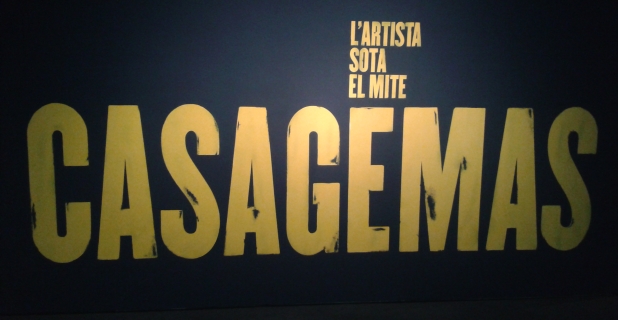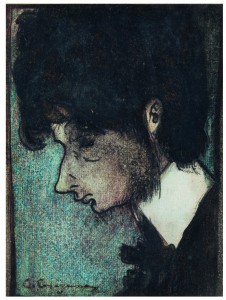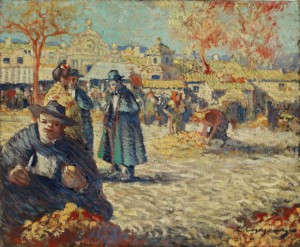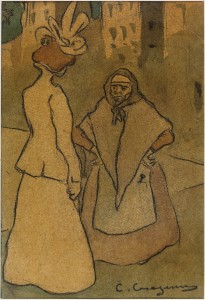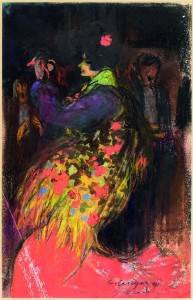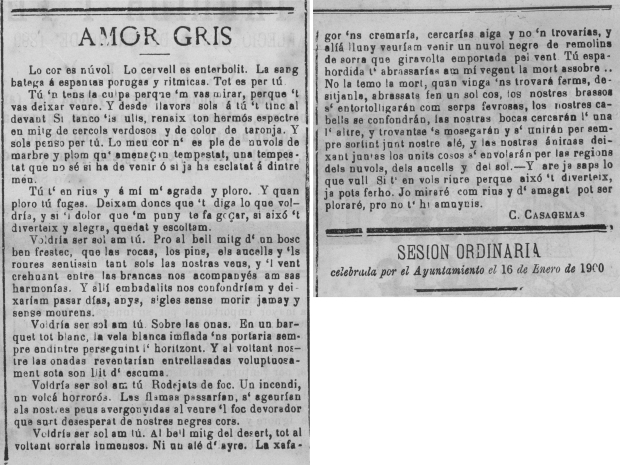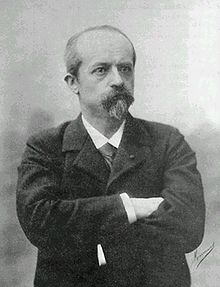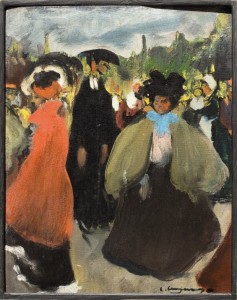The exhibition Carles Casagemas. the artist beneath the myth is the result of a notable work coordinated between all the departments of the Museu Nacional. The origin of my interest for Carles Casagemas came from many years of dedication as a curator of exhibitions and as an author of various publications about Picasso. The figure of Casagemas is key in the formative years of Picasso, both from the biographical point of view, as well as, above all, from the plastic one. After his suicide, Casagemas would become a working material for Picasso and around him he constructed one of the most impacting series ever produced, which would have as its zenith La vie, a masterpiece from the blue period, in which the protagonist was Casagemas. The bitter reverse of this monumental postmortem homage was the almost total disappearance of Casagemas as an artist, over which a major shadow would be cast for many years. Precisely, the objective of the exhibition, and of the monographic that accompanies it, is to vindicate, and above all, to show what the contribution of Casagemas was to the world of art.
Both the publication as well as the exhibition are the result of a research carried out over a period of many years, during which time I opened a Casagemas Archive, which was filled as new documentation was found: quotes, works or any information about his personality. The point of inflection would take place in August 2008, in which I made contact with a relation of Casagemas who had a lot of unpublished information about the family of the artist. After various prior attempts, I was finally commissioned by the Museu Nacional to produce a monographic exhibition about the work of Casagemas. The museographic disposition is developed in 6 ambits with the works of Casagemas and one ambit which is strictly documental. The expositive itinerary is thematic, but with a certain chronological structure. In total 38 works are exhibited, highlighted by 4 oil paintings which have never previously been published, such as Marina, the first known work by Casagemas; Landscape with large tree, attributed as based on this research, or two works of Picasso that he kept throughout his life and had never before been either published or exhibited, The market and Street of Paris.
This set is an important part of the known production of Casagemas, but we have evidence that many of his works have disappeared. In the monograph I have published for the first time an inventory of all the known works, a total of 45, with the exhibitions, the bibliography and origin of each one. I have carried out all this work by visiting the owners and seeing each of the works in situ. In this sense, I have received all the help of the Department of Preventive Conservation of the Museu Nacional, based on the technical reports produced about the works. Also in collaboration with this department we have been able to analyse various pieces of which there were doubts about their authenticity, with the aim of putting together and inventory which was the most accurate possible.
In the publication, in the biographical field of Casagemas we include a lot of never published facts and figures about his family (with unpublished photographs) or about his studios and workshops, for example we have localised the one of the street Nou de la Rambla, 57 or we have shown for the first time the location of the one of the Riera de Sant Joan, 17. We have also documented for the first time, the 4 times that Casagemas exhibited in the Quatre Gats tavern, and more important was the unique monographic exhibition he put on, between March and April 1900. I have also published various unpublished reviews of these exhibitions, specifically those of La Veu de Catalunya or from the Diario de Barcelona. In this sense one of the most arduous tasks has been to go through all the press of the time, both in Barcelona and in Paris.
At the end of the expositive itinerary, there is a collection of various documents such as letters of Casagemas, related photographs, press cuttings about his suicide and reviews of his exhibitions, amongst others. With regard to his work as a writer, here you will also find an unpublished prose poetry, Amor gris (Grey Love) that I found in the L’Eco de Sitges of 21st January 1900 and we should also add three already known poems, El llamp, Les il·lusions and Somni (The lightning, The Hopes, and, Dream).
Amor gris, however, is probably the most important of all given that it is the only text known in which he puts into words his attitude regarding a girl with whom he was in love. Until now there didn’t exist any document that was so explicit in which Casagemas talked about his feelings in the first person, and hence its significance. In this ambit we have also decided to exhibit 3 small portraits that Picasso painted of Casagemas belonging to different moments of their relation.
So as to reach the public with the maximum amount of information about the research carried out, we have installed an interactive device in which, by means of a touch screen, the spectator can visualise on the wall what we call the Casagemas Galaxy that contains information about aspects of his life and work distributed in sections such as “Family”, “Artistic setting”, “Casagemas Geography”, amongst others. If you click on them different entries appear that project all together the whole cosmogony of Casagemas. It contains more than 100 entries, each of them with texts and photographs, both of works, as well as spaces and characters linked to Casagemas.
In this section unpublished documents are also exhibited that provide new information about the last moments of his relation with Picasso, for example the articles from the French press that talk about the suicide of Casagemas. In the monograph we quote 12, some of which contribute completely unpublished information. Based on the press we have discovered that, prior to committing suicide, Casagemas didn’t arrive in Paris coming from Barcelona, as we had thought until now, but from Madrid, a fact which would confirm that he attempted to reconcile with Picasso after having quarrelled a short time before in Malaga.
Until now it was known that Casagemas had sent various letters when he committed suicide, to two French newspapers, but we have found out that there were in fact 7 letters, one of which was addressed to the police chief of Paris (Louis Lépine) and the others to “friends who lived in Paris or Madrid”, according to Le Matin. This would demonstrate, just about for sure, that one of the letters was sent to Picasso. Unfortunately the letters were police evidence that were destroyed some years later and we don’t know the contents, just as I was informed by the Service de la Mémoire et des Affaires Culturelles de la Prefectura de Policia of Paris. Casagemas died in the Hospital Bichat at 11 o’clock at night and was buried in the cemetery of Saint-Ouen de París.
All in all, this exhibition and the publication that accompanies it, aims to be a contribution to the knowledge of the life and work of Casagemas in an individualized way and separate from Picasso. The exhibition is of small format, as corresponds to an artist who died at twenty years old and left very little work. The itinerary receives a very tenuous light, given that the majority of the works are drawings, and the walls are painted in a blue nocturnal colour. At all times the intention has been that the museography synthesizes the personality of Casagemas, in the same way that he, with his work, synthesized his period, one of the most brilliant that Catalan art has lived.
Based on the work of Casagemas and given the speed with which his artistic proposal evolved, what level could he have achieved or what type of artist would he have been if he had lived beyond his twenty years? We invite you to reflect on this.
Art modern i contemporani

